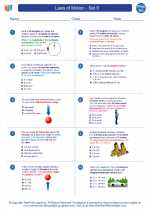Boyle's Law
Boyle's Law is a fundamental principle in physics that describes the relationship between the pressure and volume of a gas at constant temperature. The law is named after the Irish scientist Robert Boyle, who first formulated it in 1662. Boyle's Law can be expressed as:
P * V = k
Where P is the pressure of the gas, V is the volume of the gas, and k is a constant value. In simpler terms, Boyle's Law states that the pressure of a gas is inversely proportional to its volume when the temperature is kept constant.
Key Concepts
1. Inversely Proportional: This means that as the pressure of the gas increases, the volume decreases, and vice versa, as long as the temperature remains constant.
2. Constant Temperature: Boyle's Law holds true only when the temperature of the gas remains constant. Changes in temperature can affect the behavior of the gas and may lead to deviations from Boyle's Law.
Mathematical Formulation
The relationship between pressure and volume can be mathematically expressed as:
P1 * V1 = P2 * V2
where P1 and V1 are the initial pressure and volume, and P2 and V2 are the final pressure and volume, respectively.
Graphical Representation
Boyle's Law can be visually represented on a graph where pressure is plotted on the y-axis and volume is plotted on the x-axis. The resulting curve is a hyperbola, indicating the inverse relationship between pressure and volume.
Application and Importance
Boyle's Law has numerous applications in various fields, including chemistry, engineering, and meteorology. Understanding this law is crucial for designing and operating systems that involve the compression and expansion of gases, such as refrigeration systems, scuba diving equipment, and air compressors.
Study Guide
When studying Boyle's Law, it is important to focus on the following key points:
- Understanding the concept of inversely proportional relationships.
- Being able to apply the mathematical formulation of Boyle's Law to solve problems involving changes in pressure and volume.
- Recognizing the conditions under which Boyle's Law is applicable, particularly the requirement of constant temperature.
- Interpreting and drawing graphs that represent the relationship between pressure and volume according to Boyle's Law.
By mastering these concepts, students can gain a solid understanding of Boyle's Law and its significance in the study of gases and thermodynamics.
[Boyle's Law] Related Worksheets and Study Guides:
.◂Physics Worksheets and Study Guides High School. Laws of Motion - Set II

 Worksheet/Answer key
Worksheet/Answer key
 Worksheet/Answer key
Worksheet/Answer key
